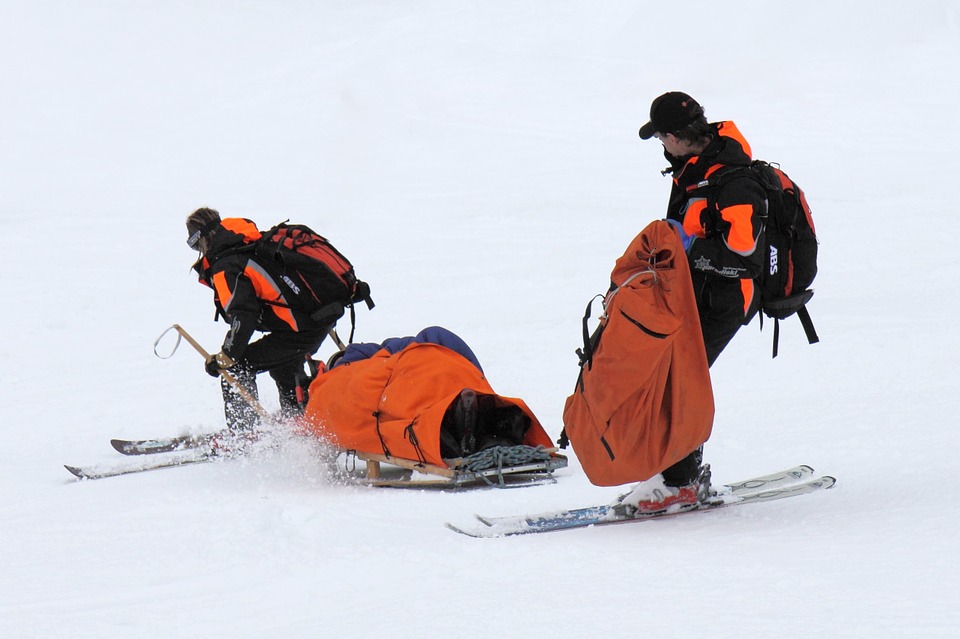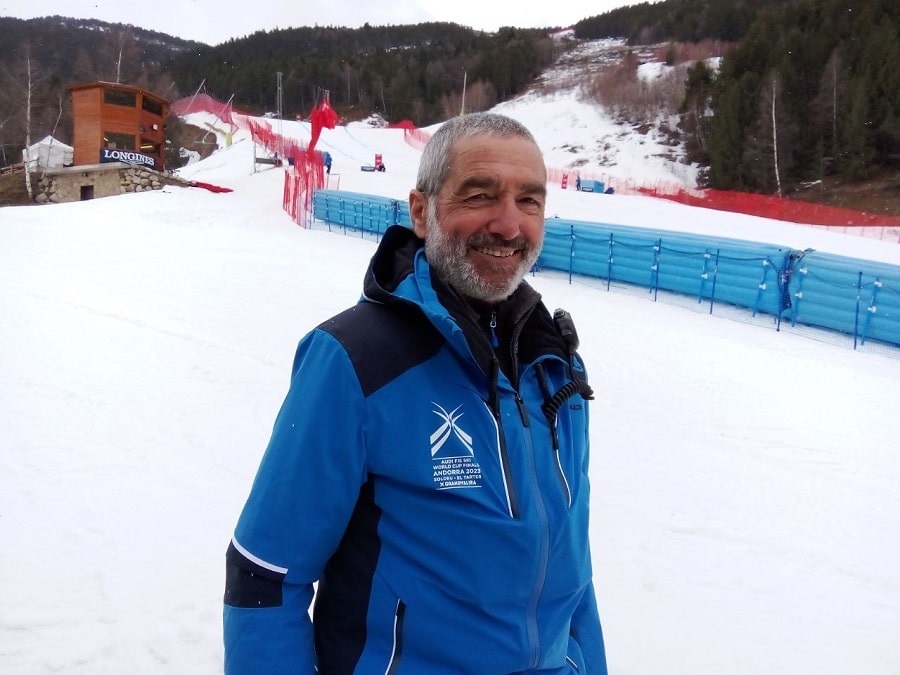Skiing gives us indescribable excitement and adrenaline, but at the same time, accidents are possible, and they do occur.
According to a study conducted by an Andorran insurance company this year, more than a third of the ski lovers surveyed were injured. Of the 4544 people, 19% had fractures and sprains, while the other 19% suffered from cuts and bruises. This is my post about:
So, how to minimize the risk of injury?
Are you fully prepared?
This is an obvious question some people forget to ask themselves before going to the ski resort. Heart problems, weak knees and being in a low physical condition means that skiing is not for you.
One needs practice to achieve confidence and control on the slopes. Mobility, stamina, and coordination are also important qualities. A quick descent down the slope is not fun if it goes out of control.
If you are traveling in a group that includes beginners and intermediate-level skiers, then choose places with “blue” and “red” tracks, as well as more complicated “black” ones, so that everyone can choose a slope corresponding to their level.
FOLLOW THE “10 REQUIREMENTS” OF THE INTERNATIONAL SKI FEDERATION!
The International Ski Federation (FIS) has developed ten rules of conduct for skiers and snowboarders around the world. They are designed to ensure your safety.
1. INSURANCE IS REQUIRED!
Amazingly, about half of the skiers who participated in the survey mentioned above did not purchase an insurance policy. Although it may seem like an unnecessary expense to some people, travel insurance is absolutely necessary, since medical bills for treating injuries received by unwary skiers can reach several thousand euros, especially if you have to call a helicopter.
Choose a travel insurance policy that covers winter sports and off-piste skiing, and includes all your medical conditions; any omission could deprive you of insurance payments.
The insurance purchase is compatible with the ski pass purchase simultaneously at any point in any ski resort.
2. SOCIAL RESPONSIBILITY!
You must behave responsibly, keep the situation under control and take into account other people’s possible mistakes, in many respects this is close to driving a car. Even well-prepared tracks can freeze, so you need to practice being able to descend slowly as well.
3. HELMET!
Wear a helmet. One can avoid most head injuries by wearing a helmet, and in many countries, it is a mandatory requirement now. You can buy a special helmet (ES 1077 standard) or rent it at the resort directly. These helmets have another advantage; they keep your ears warm during descents. The helmet is a relatively new addition to equipment, and some people find it cumbersome. Believe me, after a fall or collision, you will appreciate its importance.
4. SKI GOGGLES!
They will not only protect your eyes but also improve visibility during descents. They are also more comfortable to wear compared to sunglasses when you put on a helmet. Choose glasses that, at a minimum, protect your eyes from ultraviolet rays, air currents, precipitation, and sharp objects. Polarized glasses are excellent during low visibility.
5. SUNCREAM!
Regardless of whether the weather is clear or cloudy, apply suncream on your face before going to the slopes. There is the advice; do not apply moisturizers on your face in the morning, as low temperatures combined with wind can cause frostbite.
Especially cheap modern creams have the peculiarity of changing their properties with changes in temperature and height (pressure); they behave differently. That is, using suncream made for the beach, you will get a completely different result, being at an altitude of more than 2000 m.
6. WARM CLOTHING AND FACE MASK (BALACLAVA)!
Warm clothing and a facemask (balaclava) is the quintessence of safe skiing in the mountains. In addition to ski pants and a jacket, you need to wear several more layers of clothing and purchase a pair of quality ski gloves that will keep your hands warm and will protect you from the icy wind. The mountain weather changes very quickly, and additional protection from a backpack becomes necessary often during the day. We highly recommend thermal underwear made of synthetic fabric or wool rather than cotton. The best balaclava at altitudes from 2000 m is a mixture of 70% acrylic and 30% cotton, and vice versa, at altitudes up to 2000 m the best result: 70% cotton and 30% acrylic. Combination of heights and use of materials are according to your preferences and compliance with allergies.
7. BACK PROTECTION!
Although this is not a mandatory requirement, the protection is absolutely necessary, if you have back problems or you are a freerider/freestyle rider. The protection must have good ventilation and comply with CE EN 1621-2 European standards.
8. BACKPACK: ITS QUALITY, AND CONTENTS!
If you want to take small items with you, such as a phone, camera, or water bottle, then it will be convenient to carry them in your backpack. It must be durable, waterproof, and snowproof. It should not have any hanging straps or buckles that can catch on the lift or in case your ski flies off and accidentally catches on it.
9. Off-piste riding!
Daredevils and especially young people like off-piste skiing, especially since modern skis make it easy to cut deep snow. Beginners or intermediate skiers who want to experience extreme sports should bring along an expert who knows the terrain well and can help you if you are stuck.
10. Alcohol and drugs!
One has to exclude alcohol and drugs completely when skiing. Especially young people often abuse this rule; nevertheless, FIS distinguishes this item among the safety rules.
Remember that if you ride off-piste, you do it at your own peril and risk, and are solely responsible for yourself. Consider all possible hazards, including avalanches, weather changes, glacier cracks, and snow quality. It is also very important to include a clause on this type of riding in your travel insurance.











